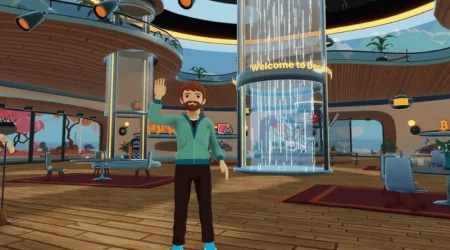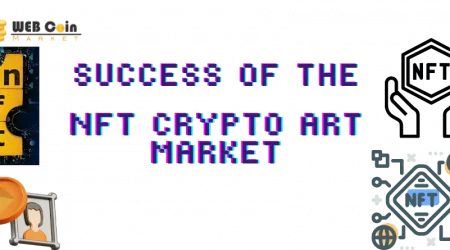The Concept of a Metaverse
The concept of a metaverse appeals to many individuals. However, some questions remain: Do the Social and Interoperability aspects outweigh the costs? Do you see it becoming a mainstream reality? And if you do see the value, do you think it is feasible? Let us know your thoughts in the comments below. What is the best way to make it work?
Table of Contents
Social Aspects Of A Metaverse
The Social Aspects of a Metaverse (also known as a meta-universe) is an emerging technology on the internet that mimics the physical world. It uses virtual, augmented reality, artificial intelligence, social media, and digital currency. Some governments are expanding their reach into the metaverse, with Barbados even planning to open a diplomatic embassy there. Companies like Decentraland are building real metaverse platforms.
Developing a viable metaverse requires careful planning and policy consideration. First, it must ensure that users can communicate freely without fear of reprisal. This is a challenge that will require more than high-speed Internet connections. Secondly, it needs a stable and fast connection. This means that users need to have at least a fifth-generation wireless network. Third, a stable, fast internet connection is crucial for a metaverse to function.
Next, a metaverse’s social aspects are critical. Immersive experiences will likely result in more emotional identification. This is because avatars that are personified are more likely to inspire empathy than those that are flat. Furthermore, personification is likely to encourage a greater sense of reality in the metaverse and more real-world actions. Therefore, this type of technology is crucial to the future of technology and the world of human interaction.
Negative Effects
While the Social Aspects of a Metaverse are critical to its success, they can also have adverse effects. For example, virtual reality can encourage harmful behavior. When it is highly interactive, these behaviors can be amplified and become endemic. Similarly, in a traditional society, harmful behaviors can become a problem, especially when the social aspects of a metaverse are ignored. If these are not addressed, society is likely to be harmed.
A Metaverse may even make mental health problems worse. People who spend much time in virtual environments can become disconnected from reality and fail to recognize the real world. Such a condition may even lead to suicidal behaviors. Moreover, this technology could have beneficial effects on children. A metaverse can help them grasp abstract concepts and gain hands-on experience. If technology improves mental health, this could be an excellent opportunity for our society.
The metaverse concept was first described in the 1992 dystopian novel Snow Crash. It later became the basis for several online communities. The first major one was Second Life, a virtual world where users can interact with each other and build a virtual community. A digital currency is used to buy virtual items and services. The metaverse is open to both new and old users. Traveling in and out of the metaverse is possible and has no specific purpose.
The metaverse concept is relatively new, although the idea of a virtual world isn’t new. Stephenson’s novel, Ready Player One, popularized the idea and was later made into a movie. The novel is a dystopian sci-fi novel that is set in the year 2045. Users access the virtual world using virtual reality (VR) visors or haptic gloves. They can interact with the virtual world through chat rooms and buy goods from merchants.
Interoperability
There’s a lot of work to ensure that different metaverses are interoperable. While it is vital to building standards for interoperability, it is equally important to create a platform where users of different metaverses can enjoy a unified experience. The MetaTraversal Initiative is working to develop open standards to ensure this happens. The initiative also plans to develop specifications for various aspects of the metaverse.
As the Internet of Things (IoT) grows in scope and complexity, interoperability will be critical. Assuming that artificial general intelligence (AI) systems will one day be able to interact with each other, there will be hundreds of metaverses. These will be spread across genres and types of data. People will have avatars and digital goods and want to be able to teleport to different locations. To achieve this, developers should consider using an Open Metaverse OS, a decentralized set of tools that operate through standardized protocols.
Interoperability between Metaverses is crucial for users to enjoy the benefits of this technology. With interoperability, different projects can seamlessly transition from one another. A metaverse can be accessed through a single browser, a gaming console, a modeler, or a virtual reality headset. Avatar integration is essential for a seamless experience. There are many ways to make a metaverse accessible to people of all types and backgrounds.
There are several layers to achieving this goal. For example, a metaverse should implement a model standard used to mimic the properties of a virtual environment. A protocol standard, on the other hand, should allow the exchange of virtual goods across various metaverses. In addition to enabling interoperability, this technology should have standardized interfaces between different platforms and services. By establishing common technological standards, a metaverse can gain mass adoption.
Integration
A metaverse’s interoperability depends on its infrastructure. It should support various technologies, including blockchains. The blockchain protocol is a famous example. The Ethereum blockchain is one such technology. A blockchain is a decentralized system of virtual objects that are linked together. The blockchain protocol is a technology that can help achieve interoperability. It also enables the transfer of data between metaverses.
An entire metaverse will integrate the physical and online world. Identity, relationships, and money will be identical in both. This will ensure that a single metaverse exists. The future of interoperability will rely on the ability of a metaverse to become interoperable with all other systems. This will be a critical part of how the technology will be used. And the key to becoming THE metaverse is interoperability.
In addition to facilitating interoperability, a metaverse must also allow for asset mobility, and this goes beyond simply transferring funds from one system to another. A hypothetical person who buys a Gucci bag or pair of virtual sneakers in one world might also want to dress up their avatar with these purchases from the previous day. However, this interoperability is difficult to achieve when a metaverse is built as a self-contained silo.
How Do NFTs Fit Into the Metaverse?
In the metaverse, NFTs acts like a ticket to virtual events. Some of these events may be free, while others require payment. NFTs have multiple uses in the metaverse, including as currency in the world of The Sandbox, where you can buy and sell virtual land. To understand their usefulness in the metaverse, consider these two examples. If you’ve never heard of them, they’re a virtual currency, just like Bitcoin.
Real estate is another critical component of the metaverse. Users can purchase virtual lands and adapt them to their metaverse locale. In addition to housing, people can sell or rent real estate. Among other uses, people can host events or set up a shop. Metaverse real estate is already a growing part of the ecosystem, and one metaverse example is Decentraland. Recently, the metaverse hosted a virtual fashion show in which finalists’ designs were sold as NFTs. The metaverse promises to be a vibrant environment for musicians and designers.
Despite the potential for these developments, a new game developer has been working on a multiplayer action RPG for the blockchain. The game is expected to launch on the Ethereum blockchain in 2022. To facilitate this, developers have built a patented off-chain custody system, which will allow users to export and import NFTs for real-world value. Currently, Big Time Studios has received $21 million in funding.
Read More: How to Buy Virtual Land in the Metaverse
Cost
The cost of a metaverse is still a mystery to many. While you’ll probably already pay for technology to access the virtual world, you might not think about the costs of a metaverse until you need to use it in a certain way. In some cases, you’ll pay for a digital avatar and various digital wedding props. Some people have speculated that the cost of a metaverse wedding could be up to $10,000, but the exact cost depends on the needs of each individual.
The cost of a plot in the metaverse depends on the location. The cost of a plot in The Sandbox can be a few thousand dollars, while that of a plot in Decentraland can be several thousand dollars. This means that it will cost more if you are in the area near a plaza. A plot in the metaverse is also more expensive than a real-life plot. If you’re looking to build a virtual home, you’ll want to consider the costs of building the house in the first place.
The cost of a metaverse won’t be free, but it won’t be expensive compared to modern internet access. The cost of a metaverse subscription won’t be much different than paying for a subscription to a website. However, it won’t be free, and you’ll need a good internet connection to connect to it. It’s also worth noting that this kind of virtual world is not a good investment.
You can use metaverse land to create anything digital. You can build an art gallery in Decentraland, host virtual concerts, or install Domino’s pizza vending machines. In the future, your avatar can teleport to any location in the world. The cost of a metaverse may exceed ten times your investment.
Virtual Land
You can buy virtual land in the metaverse for $35,000 or more. This type of digital real estate is similar to a thriving virtual reality economy, where avatars purchase stuff or amusement parks. While it may be a few years until a full-fledged virtual world is available for adults, the idea of buying virtual land is already starting to become real. More than two hundred consumer-facing brands have bought virtual land in the metaverse.
However, the price of a Metaverse plot can rise dramatically as the value of the real estate increases with the number of people who visit it. While the cost of a Metaverse plot may be less than $100, some users have paid millions of dollars for theirs. In real life, the cost of land depends on the land’s quality and the residents’ behavior. While the price of a Metaverse land plot is much lower than the tangible world equivalent, the demaitsfor it and its price.





Leave a Reply